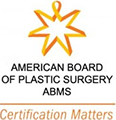Breast Augmentation – Is it safe?
January 10, 2013
breast augmentation recovery, breast augmentation recovery tips, breast enlargement, breast implant safety, breast implants in atlanta ga
In a word, Yes. Breast augmentation is a safe and transformative procedure; however, as with all surgeries there are a few complications you should be aware of. The implant companies will tell you that their devices are designed to last 10 years; however, this is both variable and often the lesser of more common problems. Approximately one in four women that undergo implantation will require a second revision surgery in within the next four years, and the main causes for this are (i) a hardening and possible pain in the breasts from contracture, (ii) dissatisfaction with size, and (iii) implant rupture. Below is my attempt to address each of these as well as an answer to breast cancer detection in augmented women.
Capsular Contracture
All implanted materials cause an immune response in your body that results in a “scar” surrounding the device. These are called capsules. They can actually be a good thing if they remain soft as they keep the implant stable and in the correct place. At times these capsules can become thick, hard and even cause pain; a phenomenon called capsular contracture. How often does this happen? In patients undergoing cosmetic breast augmentation it occurs anywhere from 8% to 40% with an increasing rate the longer you have your implants.
Capsular contracture appears to have two distinct time-points: (i) early, thought to be due to poor sterility or poor surgical technique, and (ii) late, likely due to a chronic inflammatory response. Early contracture occurs in the first several months and is noted by a hardening of your breast and often a migration of the implant up toward your collar bone. This is thought to be caused by bad infection, bleeding, or fluid collecting around the implant during your surgery. Late contracture occurs in the following years and is likely due to an indolent bacterial coating on the implant from the initial surgery or from gel bleeding from within the implant.
Treating contracture can be difficult, and prevention is the key.
Once it develops, many techniques can be used. The easiest and least often chosen is to remove the implants. The next option is to change the location of the implant (from over the muscle to under or vice versa) or change the type of implant. A new method is emerging in which your surgeon places a piece of cadaver skin product (either from pigs or humans) between the implant and your breast tissue. These are called ADMs or biologics and the early results are impressive. All of these options can be expensive, but check with your implant company as you may be reimbursed for part of your procedure.
Size Dissatisfaction
Most women that are dissatisfied with their size want to be larger. In reviewing our patients over the last ten years, only about 6% undergo a revision surgery to have their implant volume changed. Of these women, two out of three want to be larger and on average about 75cc bigger (roughly half a cup size). Most of the women wanting larger implants were under the muscle and those actually requesting smaller implants were above the muscle. Age, BMI and initial implant volume did not appear to influence a patient’s desire for larger or smaller breasts. Comprehensive pre-operative planning is crucial here, and for a detailed discussion please see.
Implant Rupture
The silicone surface of modern breast implants are extremely durable. Implant rupture rates of the newer generation implants are approximately 1% at six years. It is clear that the shell strength diminishes over the lifetime of the implants and that rupture rates increase with time. The implant companies warranty their devices for ten years; therefore, revision surgery for rupture should be covered.
If a silicone breast implant ruptures and leaks gel into your breast tissue, your overall health is not at risk. Patients may not even know when gel implants have ruptured, because the capsule surrounding the implant holds the gel inside. These silent leaks may only be picked up on mammography or MRI. However, if a saline device leaks you will experience a deflation of your breast as the fluid is resorbed by the body. In either case, see your plastic surgeon to discuss your surgical options.
Implants and Breast Cancer
Neither saline or silicone gel implants lead to an increased rate of breast or other cancers. Most patients want to know whether implants can hinder breast cancer detection. The answer to this is both yes and no.
Yes, implants decrease the ability of a radiologist to detect breast cancer on a mammogram. Breast implants are not as pliable as breast tissue, and the best images are created when the breast is squeezed so there is less density for the xrays to travel through. Dr. Ecklund created a different screening protocol for augmented women to help increase the yield of mammograms; however, it still lags behind non-augmented patients.
No, despite a lower sensitivity to detect breast cancer on mammography the cancers found in augmented patients are the same size and stage as other women. In fact, the disease free survival and overall survival for augmented women is the same as other women. One reason is thought to be that the implant sitting under the breast tissue actually thins your tissue and makes it easier to feel a developing tumor.
The take home message is that an implant can make it harder for your radiologist to detect cancer in your breast, but this does not affect the development of or survival from breast cancer.









